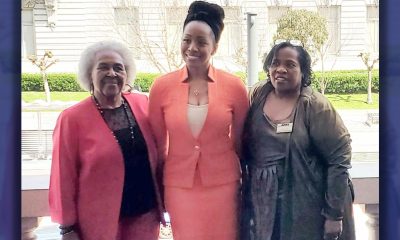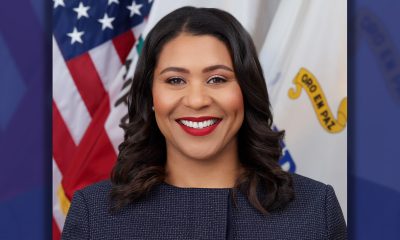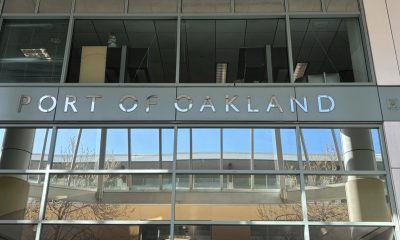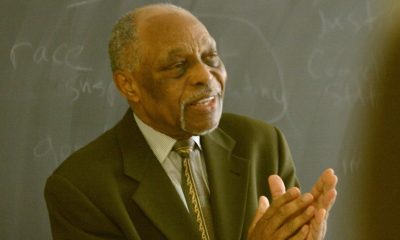Black History
Hidden History Black Museum Opens in Los Angeles
Various actors and celebrities such as Vivica A. Fox, and hundreds of other people, were on hand to celebrate the last weekend of Black History Month. Founded by Tariq Nasheed, an award-winning documentary film producer and New York Times best-selling author, the Hidden History Museum highlights current and past historical Black figures from freedom fighters, to inventors, master teachers, to founding pioneers in Black California, as well as Hip-Hop culture on the West Coast.
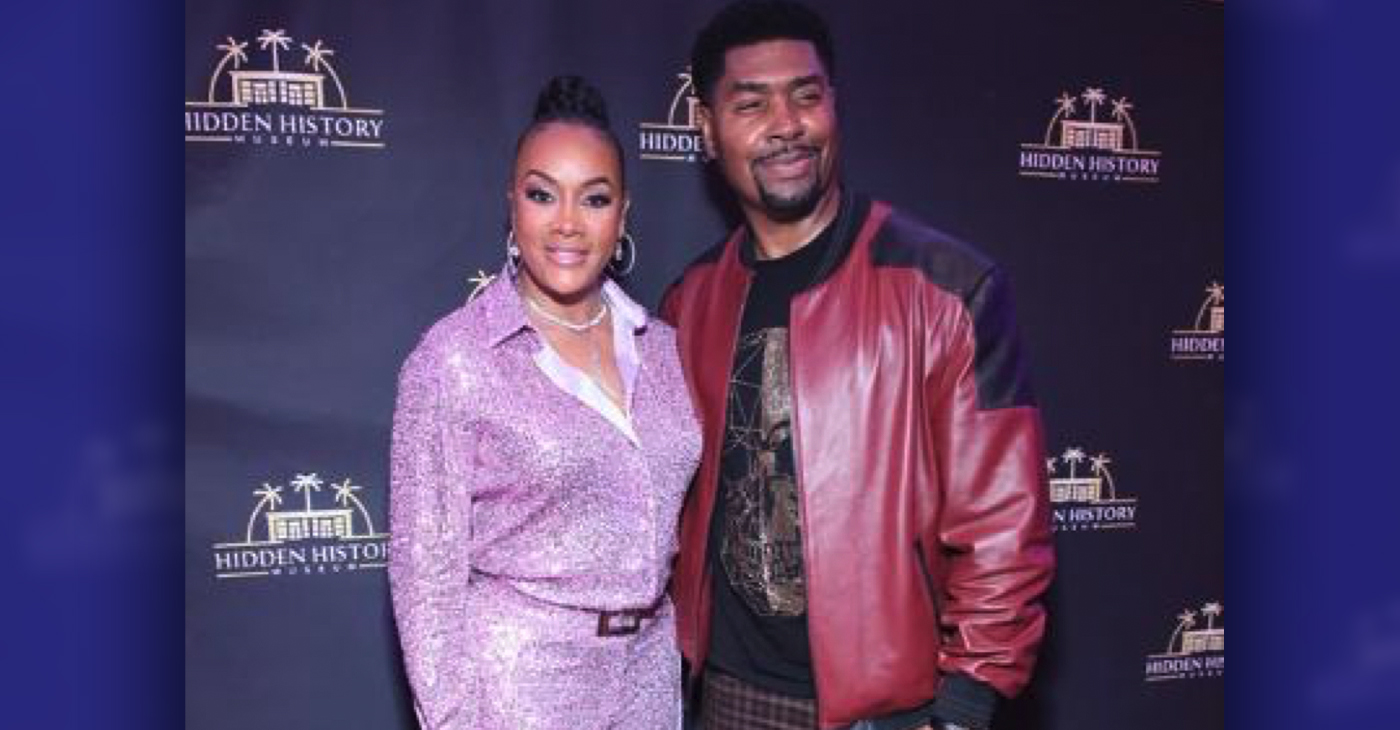
By Lee Hubbard
While the rain stormed down all day in the Jefferson Park area of Los Angeles, it could not damper the excitement of the grand opening of the Hidden History Museum of Black culture, this past weekend.
Various actors and celebrities such as Vivica A. Fox, and hundreds of other people, were on hand to celebrate the last weekend of Black History Month. Founded by Tariq Nasheed, an award-winning documentary film producer and New York Times best-selling author, the Hidden History Museum highlights current and past historical Black figures from freedom fighters, to inventors, master teachers, to founding pioneers in Black California, as well as Hip-Hop culture on the West Coast.
One example of this is an exhibit that looks at the naming of the state California, which was named after Califa, a queen who was a Black Moor. The Spanish writer Garci Rodriguez wrote the novel in 1500, and although Califa was a fictional character, when Juan Rodriguez Cabrillo, founded it in 1542, he named the area after the character in the novel.
“Stories like this are featured in the museum and it’s needed,” said Utopia Hammond, a San Francisco resident, who came to the grand opening. “People need to know our Black history and this museum features things and people that aren’t normally talked about and or featured in other museums.”
“I decided to start this museum after I was driving down Crenshaw Boulevard and saw that people were using the site where Nipsey Hussle got shot and killed as a tourist attraction,” said Nasheed. “On any given day, you can see crowds of people taking pictures in front of the mural that has Nipsey’s face on it.”
Hussle was a popular and emerging rap artist who was just coming into national acclaim when he was shot down in front of his clothing store March 31, 2019. The makeshift Nipsey Hussle memorial and daily scene behind it pushed Nasheed to create a place where people can see positive affirmations of black culture and tell the stories of black history that aren’t told.
“We need to create institutions that we as Black people and or Black groups own and control the narrative,” said Nasheed.
People came from all over the country for the grand opening. They also got to watch the premiere of Nasheed’s new documentary film, “American Maroon,” which looks at the Black people who maintained hidden communities while fighting with slave-owning colonizers pre- Civil War.
Nasheed spent just under $2 million to build the Hidden History Museum. Half of the money was raised in a month by a Black grassroots crowdfunding effort Nasheed started using his YouTube channel Tariq Radio, and other social media platforms. This, along with some of his personal funds were used to buy the building that houses the museum.
“The Black grassroots supported my vision and this effort,” said Nasheed. “We wanted to have the museum over in Leimert Park, a black district in LA, but when we tried to buy property there were several roadblocks, before we got to Jefferson Park.”
The Hidden History Museum is located at 2131 W Jefferson Blvd. in Los Angeles Ca. For more information, go to www.hiddenhistorymuseum.com
Activism
Oakland Post: Week of April 24 – 30, 2024
The printed Weekly Edition of the Oakland Post: Week of April 24 – 30, 2024
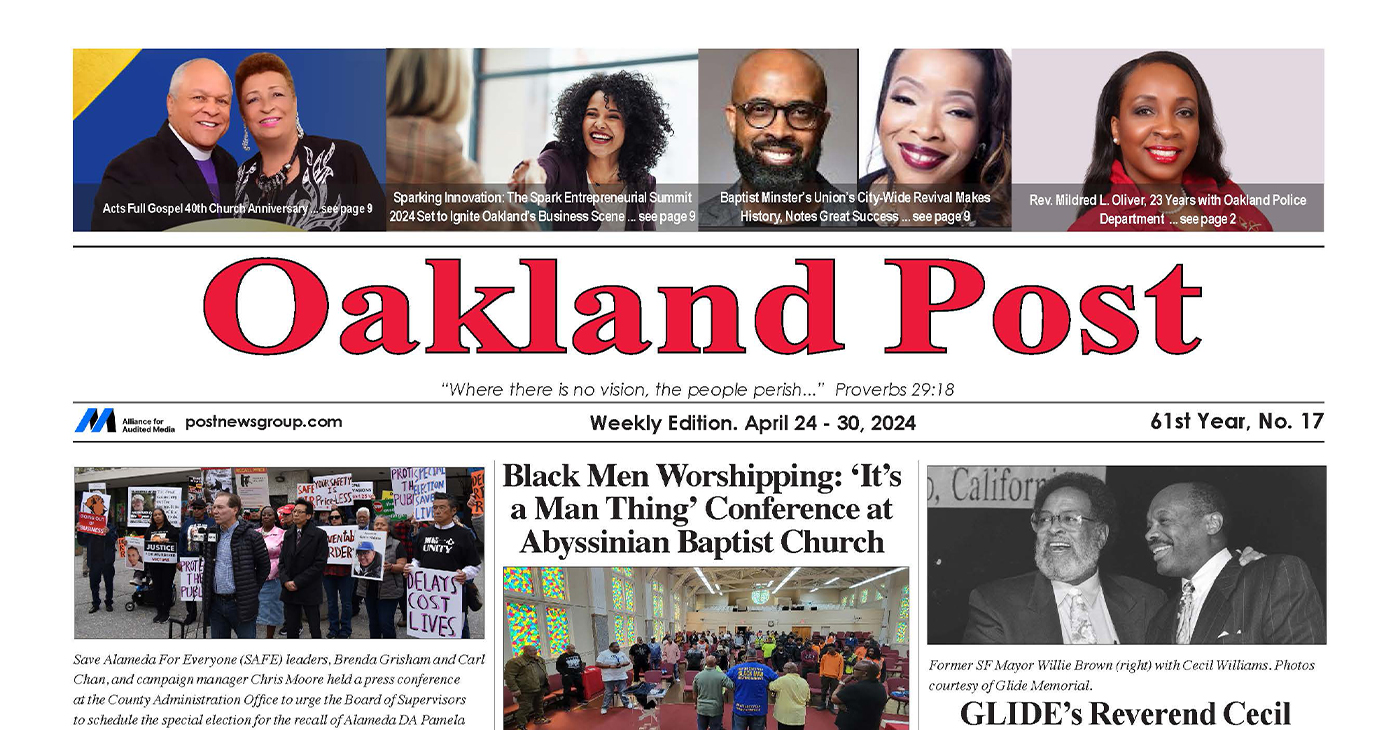
To enlarge your view of this issue, use the slider, magnifying glass icon or full page icon in the lower right corner of the browser window. ![]()
Activism
Oakland Post: Week of April 17 – 23, 2024
The printed Weekly Edition of the Oakland Post: Week of April 17 – 23, 2024

To enlarge your view of this issue, use the slider, magnifying glass icon or full page icon in the lower right corner of the browser window. ![]()
Black History
Matthew Henson: Explorer Extraordinaire
Matthew Henson, a trailblazing explorer who overcame countless obstacles to leave an incredible mark on history. Born on August 8, 1866, in Charles County, Maryland, his journey is a testament to the power of determination and the spirit of adventure.
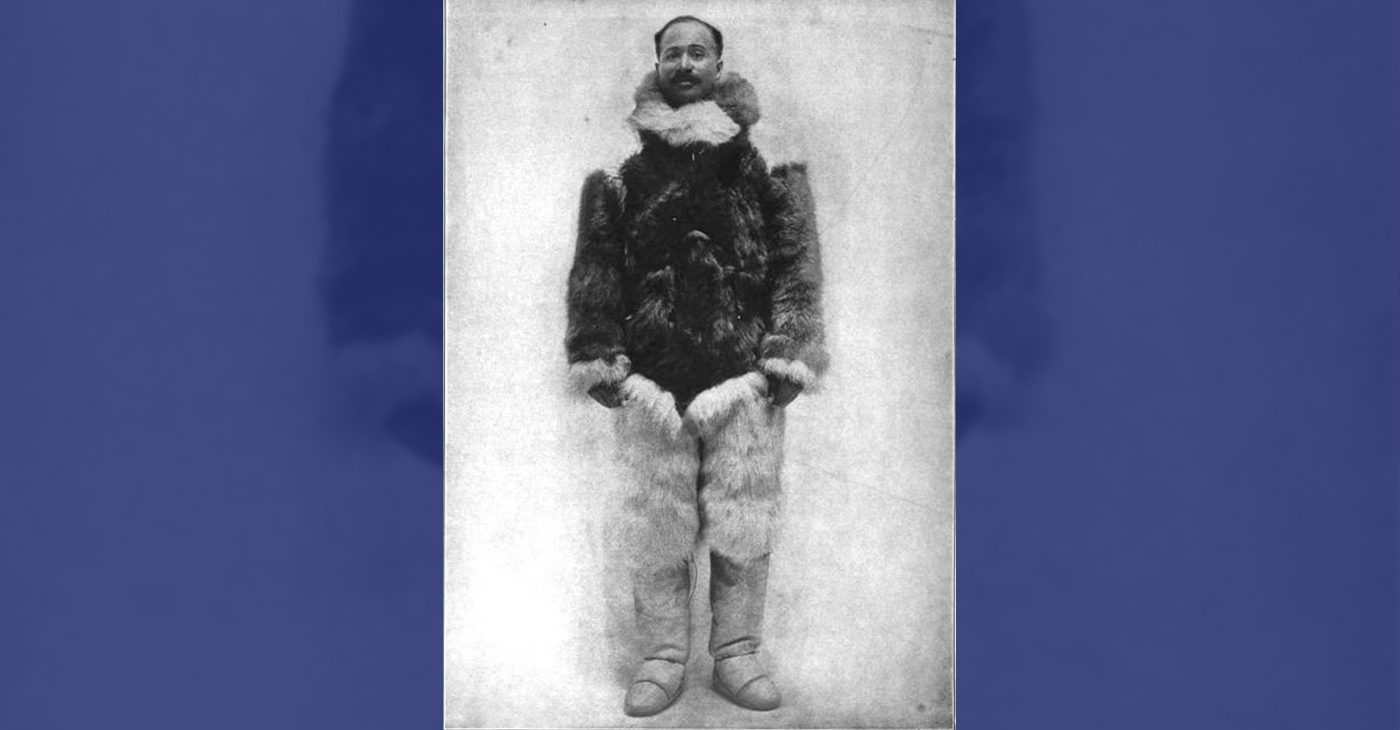
By Tamara Shiloh
Matthew Henson, a trailblazing explorer who overcame countless obstacles to leave an incredible mark on history. Born on August 8, 1866, in Charles County, Maryland, his journey is a testament to the power of determination and the spirit of adventure.
Henson’s life began amidst the backdrop of post-Civil War America, where opportunities for African Americans were scarce. From a young age, he possessed an insatiable curiosity about the world beyond his small town. At the age of 12, he embarked on a journey that would change the course of his life forever when he joined a merchant ship as a cabin boy.
His most famous expedition was his journey to the Arctic with renowned explorer Robert E. Peary. In 1887, Henson joined Peary’s crew as a seaman and quickly proved himself to be invaluable with his skills as a navigator and craftsman. Over the course of several expeditions, Matthew endured extreme cold, treacherous terrain, and grueling conditions as he and Peary sought to reach the elusive North Pole.
In 1908–09, Peary set out on his eighth attempt to reach the North Pole. It was a big expedition, with Peary planning to leave supplies along the way. When he and Henson boarded their ship, the Roosevelt, leaving Greenland on August 18, 1909, they were joined by a large group. This included 22 Inuit men, 17 Inuit women, 10 children, 246 dogs, 70 tons of whale meat, blubber from 50 walruses, hunting gear, and tons of coal.
In February, Henson and Peary left their anchored ship at Ellesmere Island’s Cape Sheridan, along with the Inuit men and 130 dogs. They worked together to set up a trail and supplies along the way to the Pole.
Peary picked Henson and four Inuit people to join him in the final push to the Pole. However, before they reached their destination, Peary couldn’t walk anymore and had to ride in a dog sled. He sent Henson ahead to scout the way. In a later interview with a newspaper, Henson recalled being in the lead and realizing they had gone too far. The group turned back, and Henson noticed his footprints helped guide them to their destination. At that location, Henson planted the American flag.
Henson’s legacy extends far beyond his expeditions to the Arctic. He shattered racial barriers in the world of exploration and inspired countless individuals, regardless of race, to dream big and pursue their passions. In 1937, he was finally recognized for his achievements when he was inducted into The Explorers Club, an organization dedicated to promoting scientific exploration and field research.
Matthew Henson died in the Bronx, New York, on March 9, 1955, at the age of 88.
-

 Activism4 weeks ago
Activism4 weeks agoOakland Post: Week of March 27 – April 2, 2024
-

 #NNPA BlackPress4 weeks ago
#NNPA BlackPress4 weeks agoBeloved Actor and Activist Louis Cameron Gossett Jr. Dies at 87
-

 Community1 week ago
Community1 week agoFinancial Assistance Bill for Descendants of Enslaved Persons to Help Them Purchase, Own, or Maintain a Home
-

 Activism3 weeks ago
Activism3 weeks agoOakland Post: Week of April 3 – 6, 2024
-

 Business2 weeks ago
Business2 weeks agoV.P. Kamala Harris: Americans With Criminal Records Will Soon Be Eligible for SBA Loans
-

 Activism2 weeks ago
Activism2 weeks agoOakland Post: Week of April 10 – 16, 2024
-

 Community2 weeks ago
Community2 weeks agoAG Bonta Says Oakland School Leaders Should Comply with State Laws to Avoid ‘Disparate Harm’ When Closing or Merging Schools
-

 Community7 days ago
Community7 days agoOakland WNBA Player to be Inducted Into Hall of Fame

